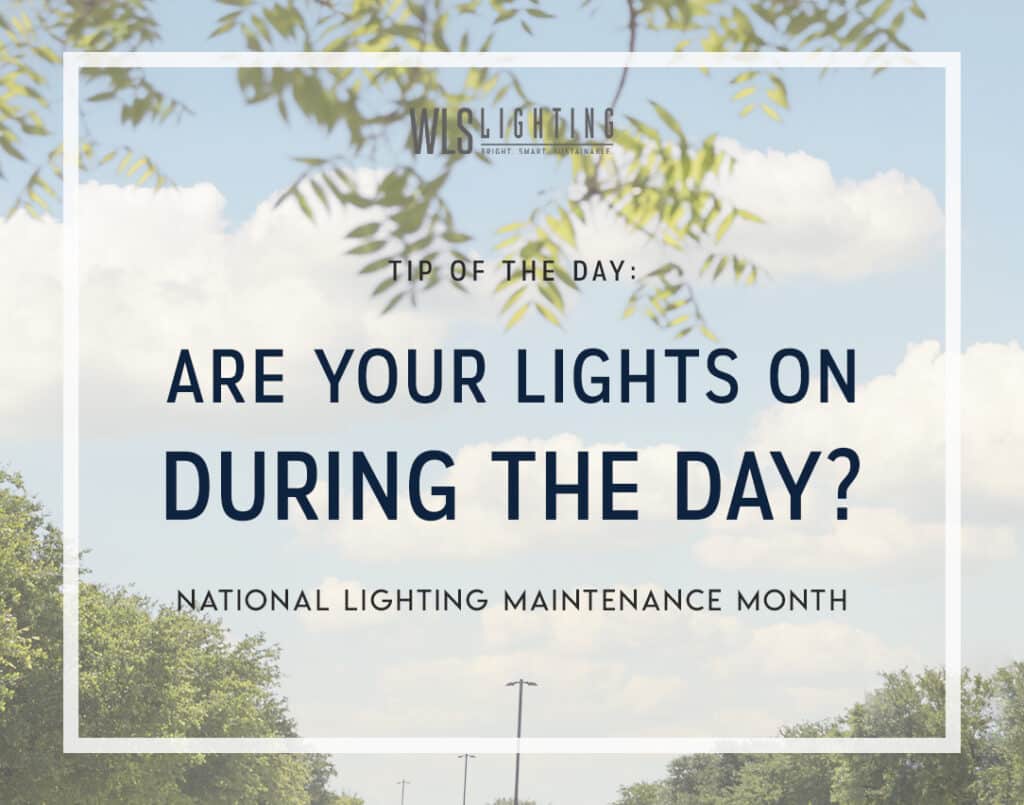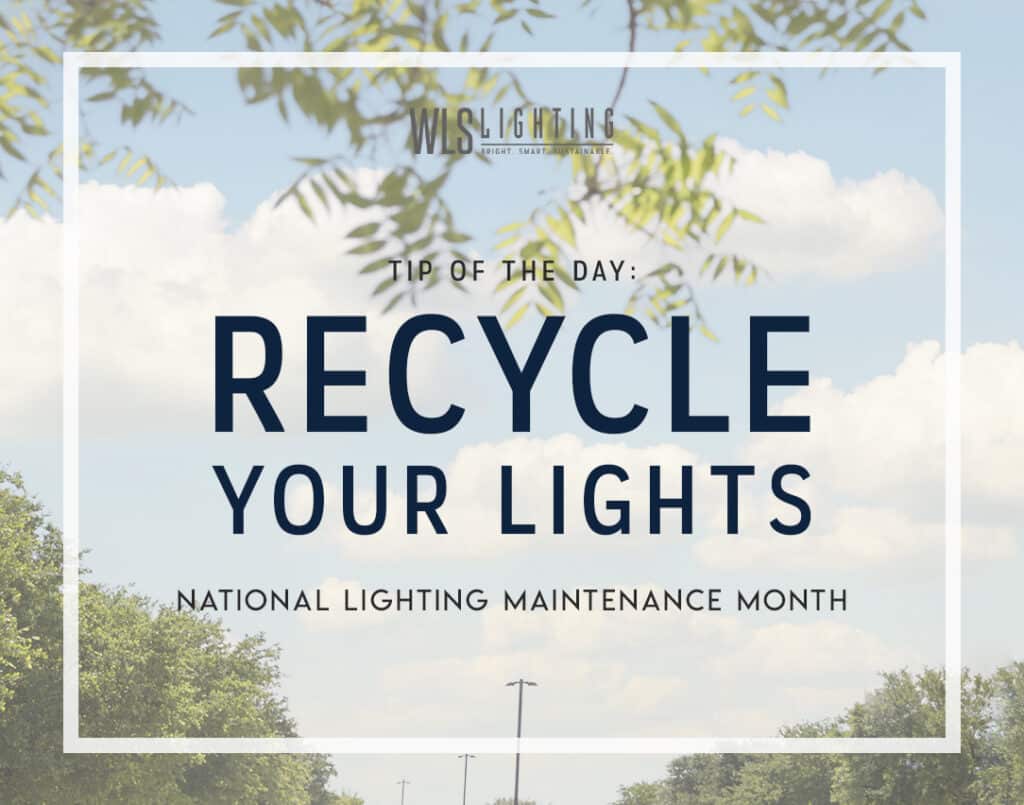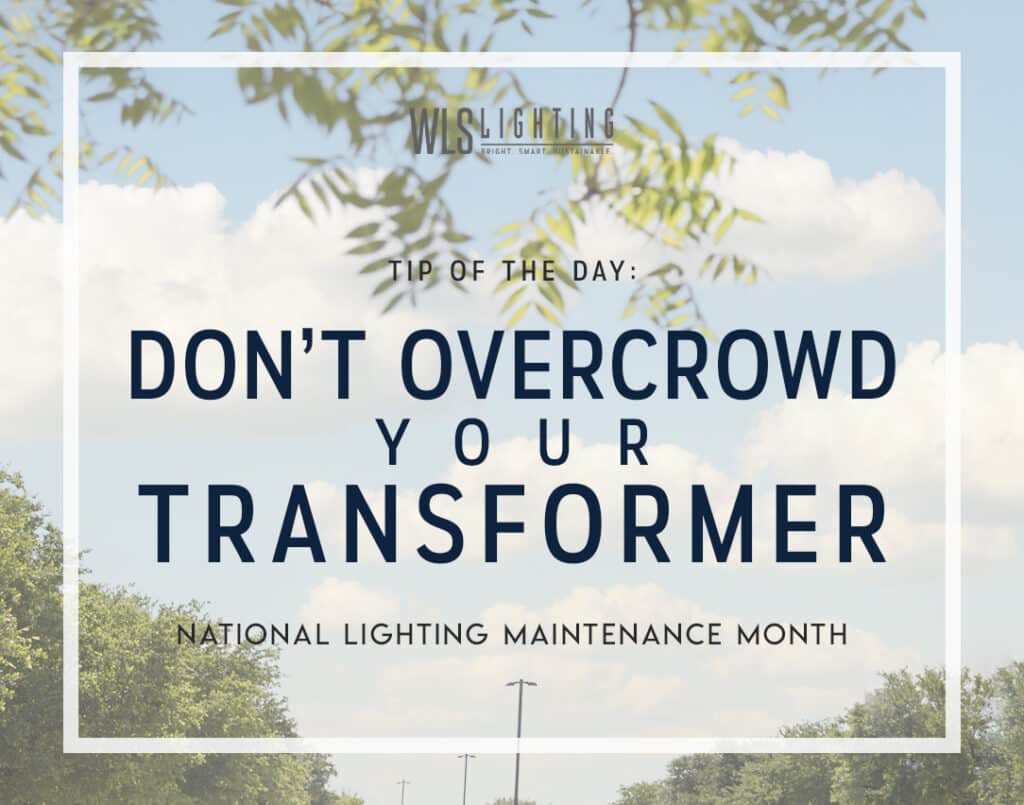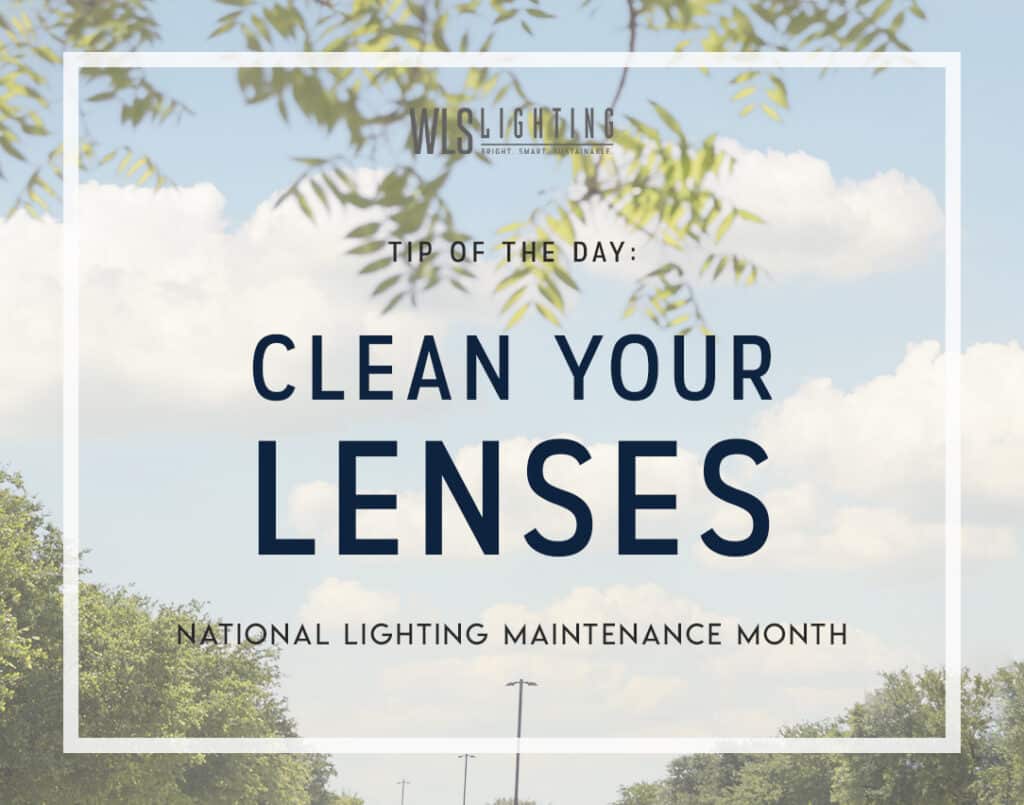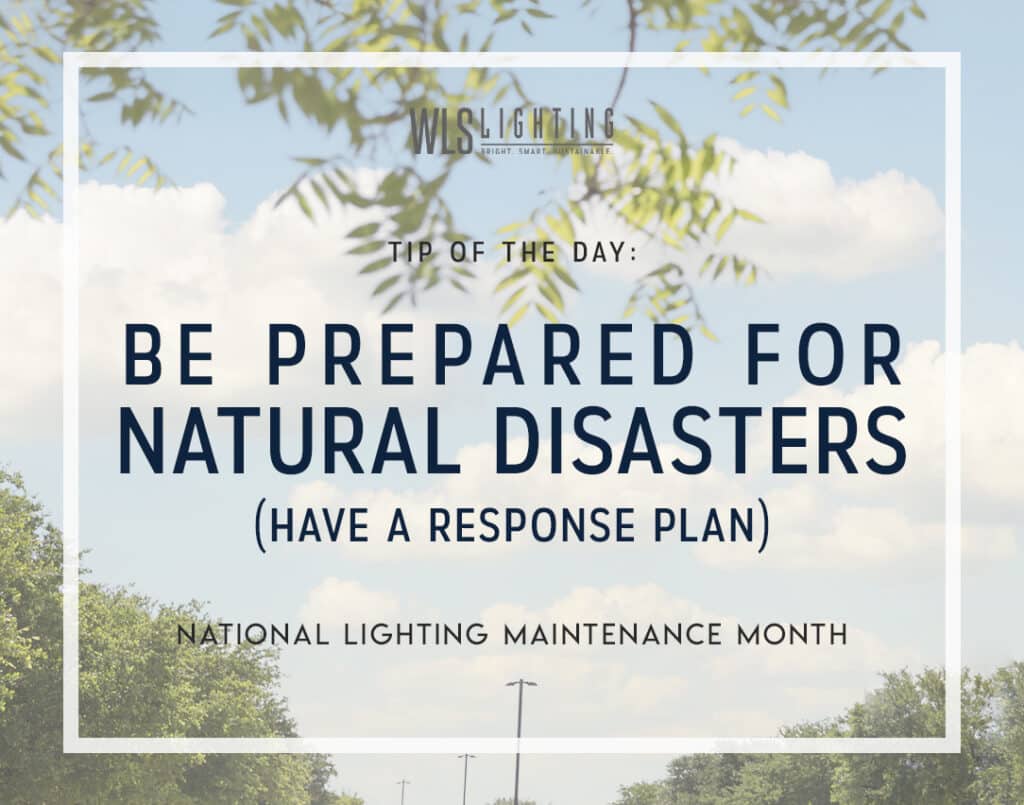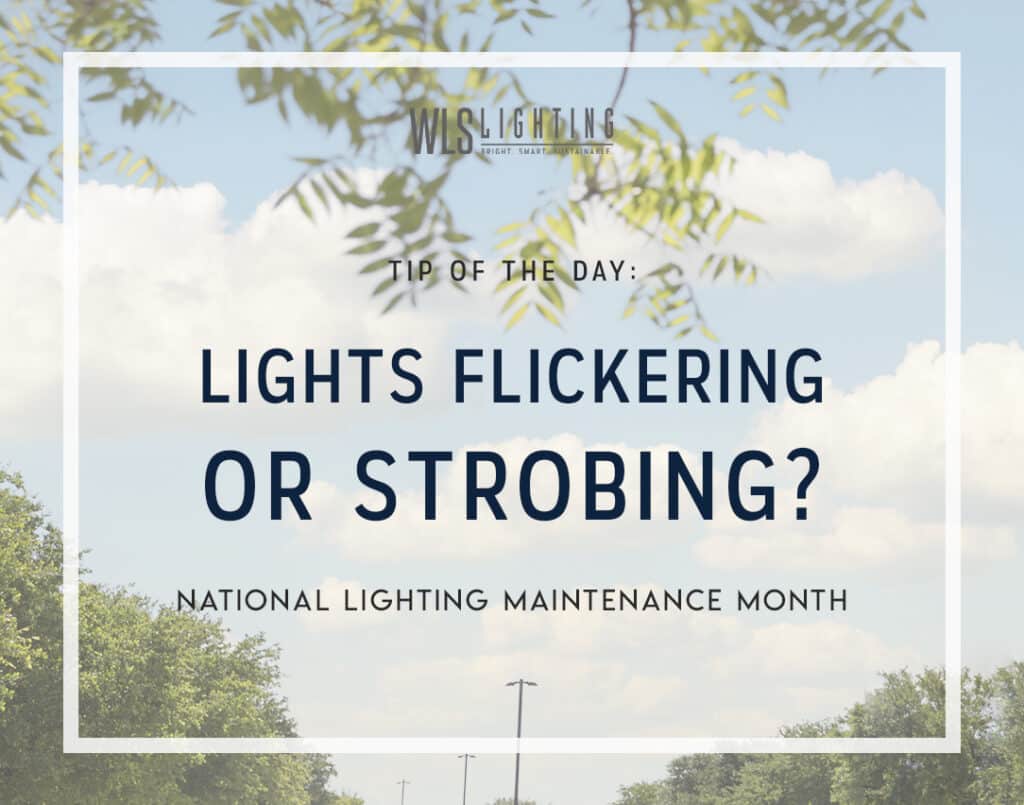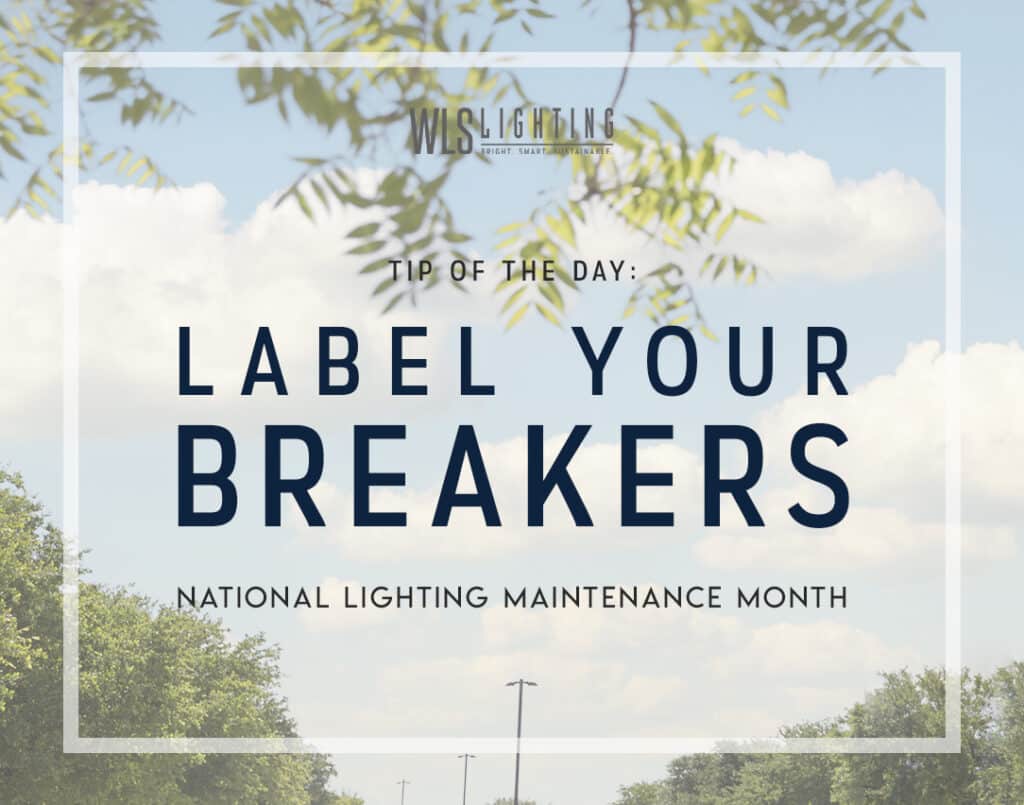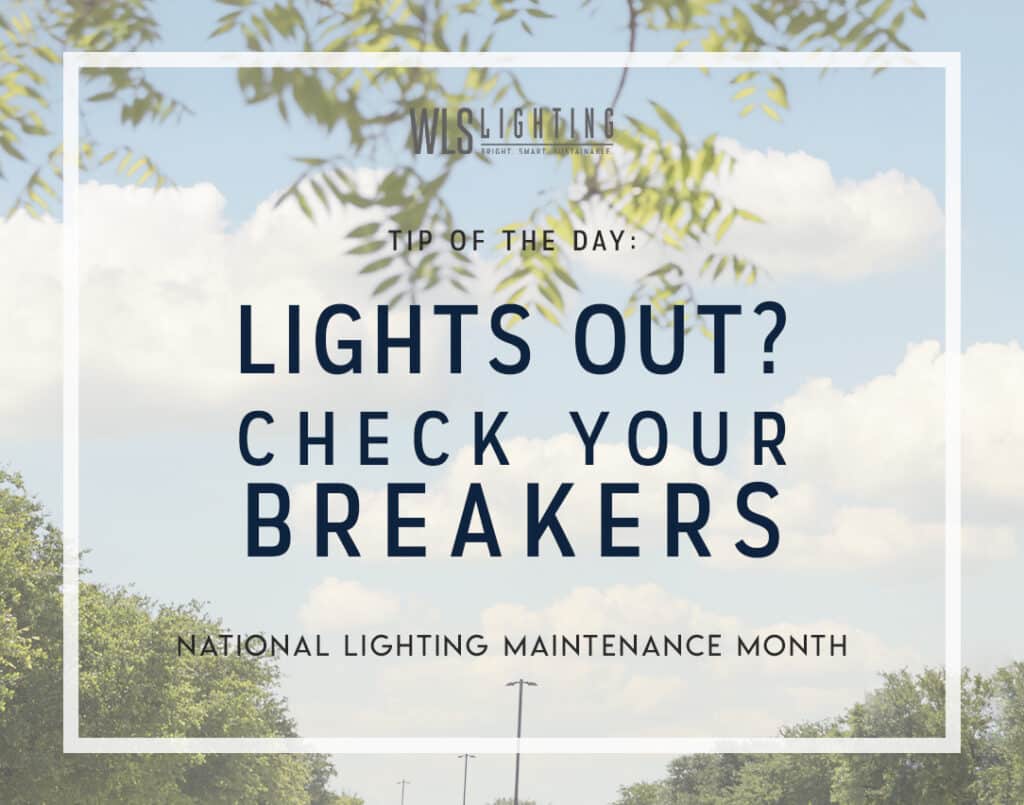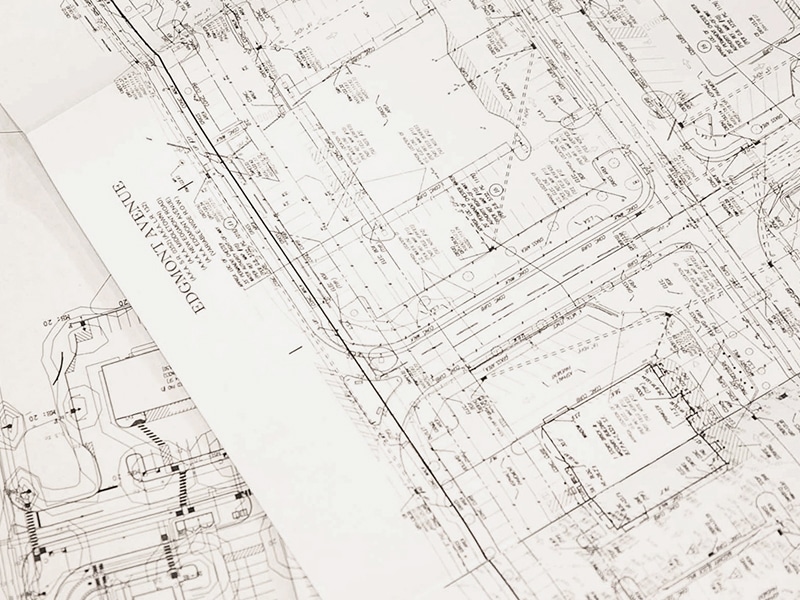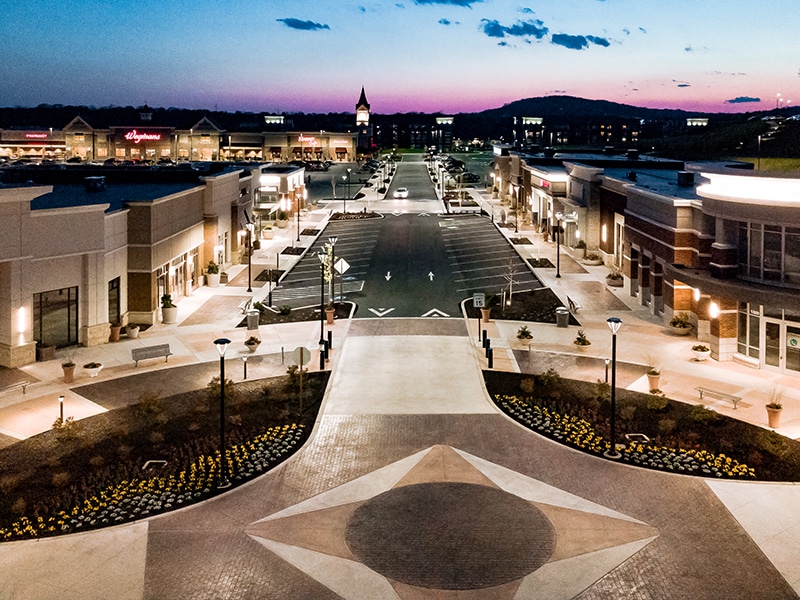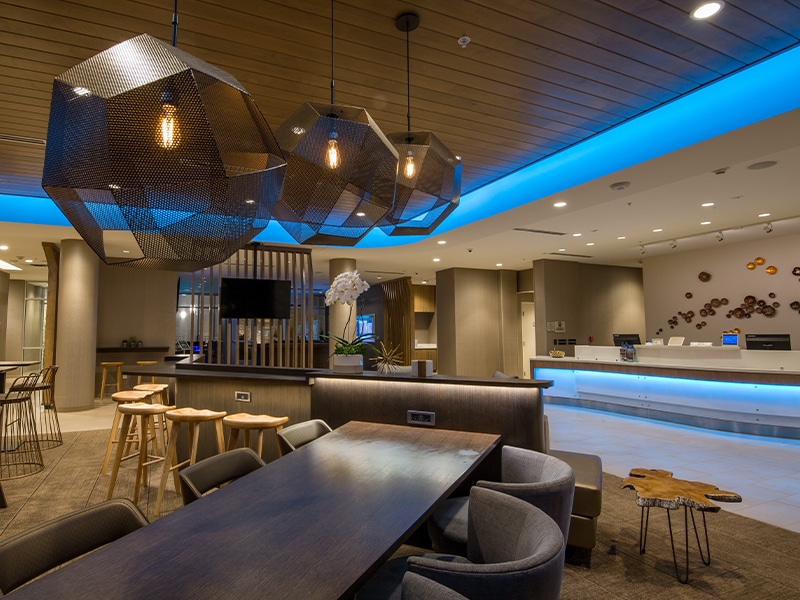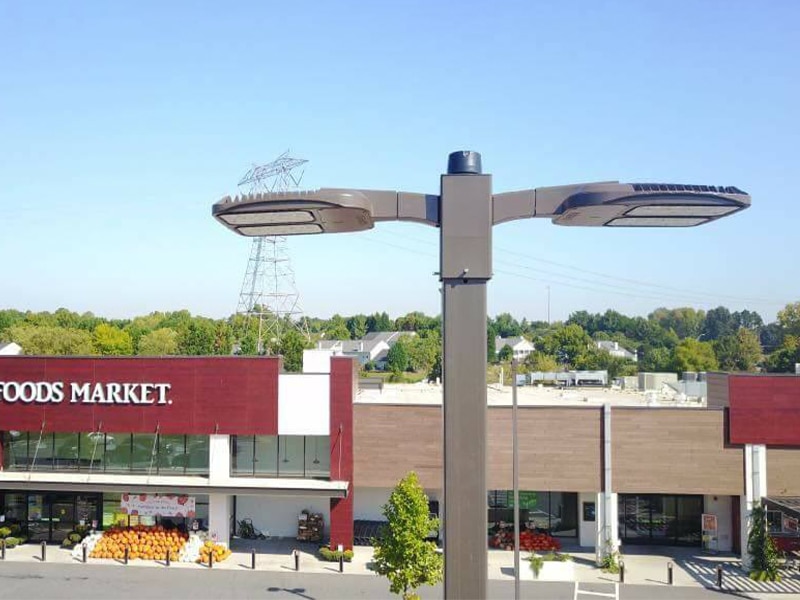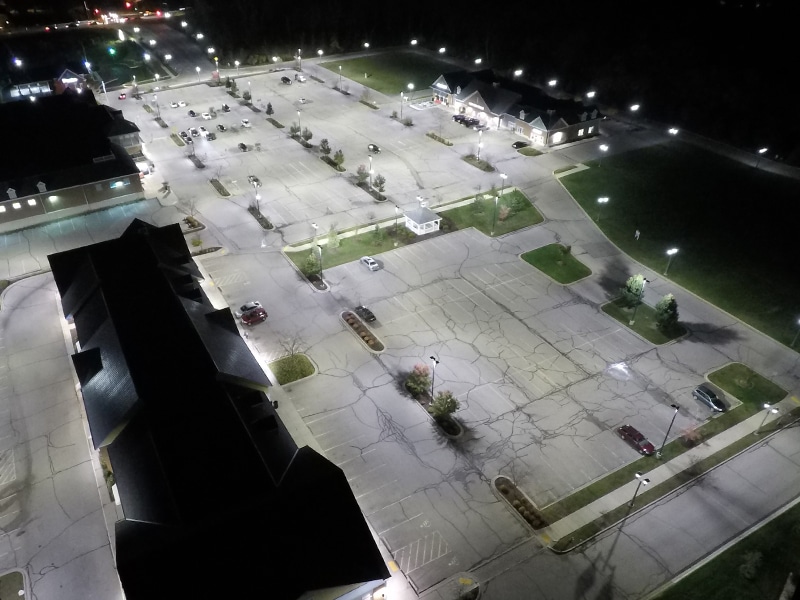In 2023 we officially established September as National Lighting Maintenance Month. Every month of September, we will focus on education surrounding commercial lighting maintenance. From preventative measures to outage solutions, we will share stories and advice to bring awareness to proper lighting maintenance. For our first year of awareness, we published these helpful commercial lighting maintenance tips and advice.
1. Lights out? Check your breakers.
If there are multiple lights/fixtures that are out, it is most likely just a tripped breaker. The first step to troubleshoot is to locate your electrical breaker box and identify if there is a tripped breaker.
It can be a high price to pay if you hire an electrician to visit the site only to find out that a breaker has tripped. A tripped breaker is an issue with a simple solution. If you don’t have a dedicated maintenance manager on your property, think about assigning someone who works at your property the duties of checking a breaker if the issue arises. This will avoid the high costs of hiring a professional electrician to flip a breaker.
2. Label your breakers.
Properly labeling your breakers on your electrical panel can ultimately lower your lighting/electrical service costs. A 10-minute task can easily turn into a job that takes hours because of breaker panels that are not labeled.
3. Don’t overcrowd your transformer.
The transformer on commercial properties is typically located inside, near the electrical panel. Many times, the transformer box is used as a shelf by people working on the property. It’s dangerous to accumulate items within 3 feet of the transformer and should be avoided. The consequence of overcrowding your transformer could be a shorter life expectancy of internal components and overheating that can cause damage to your property.
4. Are your lights flickering or strobing?
If your parking lot or building lights start flickering or strobing, it’s typically due to the lighting fixture losing a leg of power or an electrical driver dying out. It’s time to have the issue looked at by a professional and probably have a driver replaced.
5. Are your parking lot or building lights on during the day?
If your lights are on during the day, it’s likely a controller/photocell issue.
6. Have a disaster plan.
From hurricanes and tornados to windstorms and hail, it’s likely that your commercial property will be threatened by one of these during the year. Being prepared for these natural disasters by having a response procedure in place will help strengthen your recovery process.
For hurricanes, make sure you have your go-to electrical contractor on standby. Once the storm has passed, they can be ready to assess the damage and remove safety hazards on the property. Hazards on the property can be downed light poles, damaged electrical circuits, and unsecure/broken light fixtures. Not all disasters can be expected, so having a response procedure (even if you never have to use it) is essential for your property, team, and the community.
7. Clean your lenses.
Over time, light fixture lenses accumulate dirt and grime, ultimately leading to diminishing light output. If you are already having a lamp or bulb replaced in your fixture, this is the perfect time to fit in a lens cleaning. While your electrical contractor is on-site, make sure to ask them to clean the lens while they are there. Utilizing this time for extra maintenance saves you time and money, and extends the life and quality of your lighting.
8. Recycle your lights.
When light fixtures reach their end of life, every part can and should be recycled to reduce waste. When upgrading lighting from metal halide fixtures containing hazardous materials such as mercury, it’s important to dispose of these materials responsibly per EPA (Environmental Protection Agency) regulation.
At WLS, we send old lamps to special recycling and disposal centers after we remove old lighting fixtures. Ballast metal, electrical wires, casings, and aluminum housing from lighting products are all sorted and sent to recycling centers.

